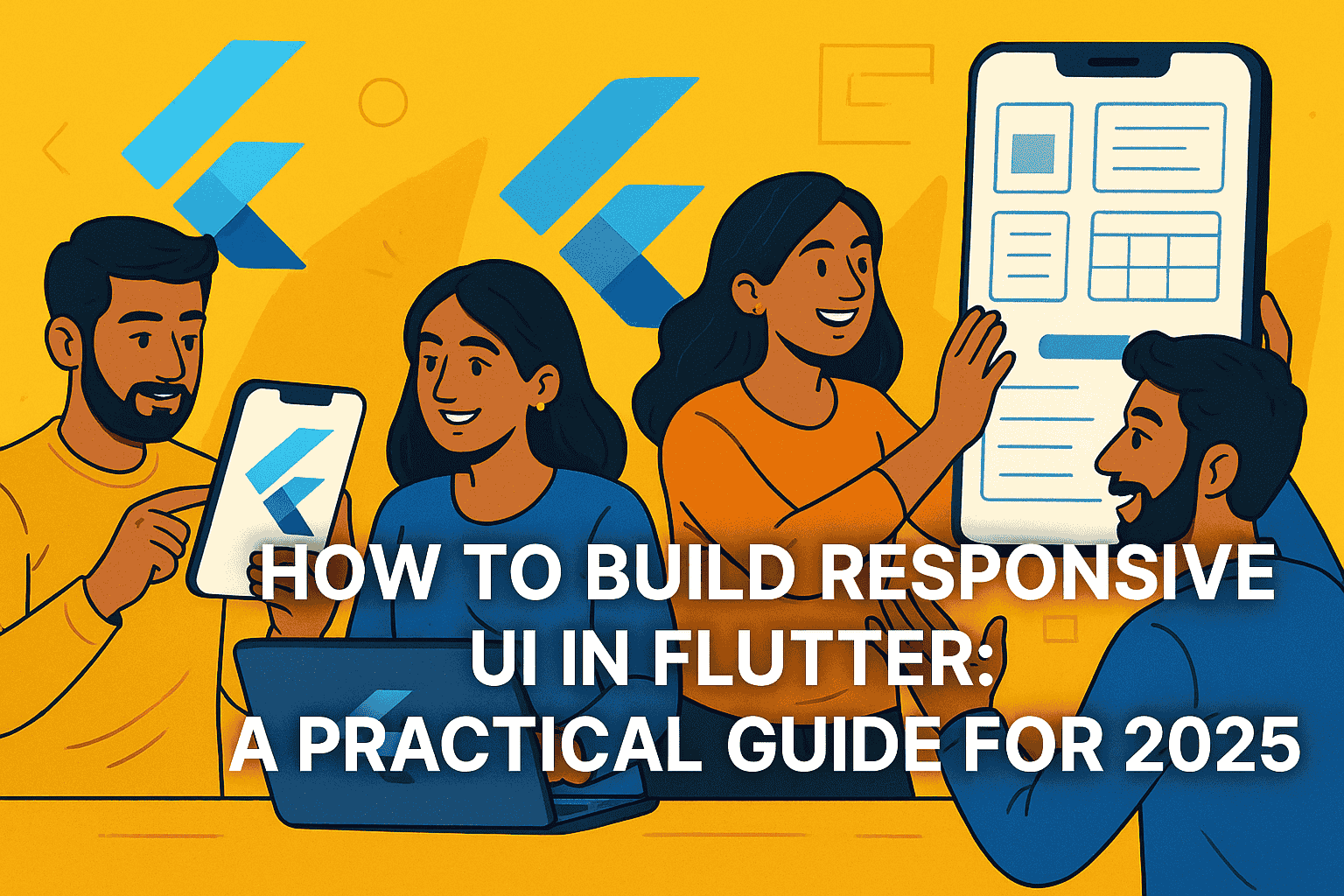How to Build Responsive UI in Flutter: A Practical Guide for 2025

Introduction
Building apps that adapt to multiple screen sizes is no longer optional. With users accessing apps across phones, tablets, and desktops, creating a responsive UI is crucial. Flutter, with its widget-based architecture, gives developers powerful tools to craft adaptive layouts. In this post, we’ll walk through the essentials of building responsive user interfaces in Flutter with practical examples.
Understanding MediaQuery and LayoutBuilder
Flutter provides two key tools to handle responsiveness:
MediaQuery: Gives information about the size and orientation of the current screen.LayoutBuilder: Builds widgets based on the parent widget’s constraints.
Example: Using MediaQuery
Widget build(BuildContext context) {
final screenWidth = MediaQuery.of(context).size.width;
return screenWidth < 600
? Column(children: [Text("Mobile View")])
: Row(children: [Text("Tablet/Desktop View")]);
}
This checks screen width and switches layout depending on the device.
Example: LayoutBuilder in Action
LayoutBuilder(
builder: (context, constraints) {
if (constraints.maxWidth > 800) {
return DesktopLayout();
} else if (constraints.maxWidth > 500) {
return TabletLayout();
} else {
return MobileLayout();
}
},
);
LayoutBuilder gives more control inside custom widgets, which is useful for modular apps.
Responsive Widgets You Should Use
Flutter includes built-in responsive widgets that help adapt layout smoothly:
FlexibleandExpandedfor adaptive spacing.FittedBoxto scale child widgets.AspectRatioto maintain proportional dimensions.Wrapfor responsive list/grid items.OrientationBuilderto adjust layout based on landscape or portrait mode.
Example: Responsive Row with Expanded
Row(
children: [
Expanded(flex: 2, child: Text("Left panel")),
Expanded(flex: 3, child: Text("Right panel")),
],
);
GridView with Adaptive Layout
GridView works great for responsive content cards.
GridView.count(
crossAxisCount: MediaQuery.of(context).size.width > 600 ? 4 : 2,
children: List.generate(8, (index) {
return Card(
child: Center(child: Text('Item $index')),
);
}),
);
This layout adjusts number of columns based on screen size.
Best Practices
- Avoid hardcoded pixel values. Use relative measurements and paddings.
- Test on multiple screen sizes using device simulators/emulators.
- Use packages like
flutter_screenutil,responsive_framework, orSizerfor scalable text and spacing. - Keep layouts modular. Break complex screens into smaller responsive widgets.
Final Thoughts
Responsive design is an essential skill for Flutter developers in 2025. With tools like MediaQuery, LayoutBuilder, and built-in widgets, Flutter makes it easy to create adaptive UIs that look great everywhere. Whether you’re building a portfolio app, e-commerce store, or admin dashboard, mastering responsive design will set you apart.
Ready to level up? Start refactoring your existing projects to be screen adaptive and explore advanced layout tools for production-grade apps.
